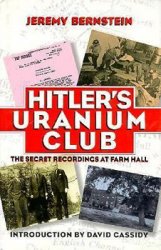The Inca say that they descended from the god Viracocha, son of the sun. Inti. He came forth from Lake Titicaca in the highlands of present-day Bolivia, far to the southeast of Cuzco, and created the last race of people—the ones who were built of stone and who dwelled in the ancient city of Tiahuanaco. But Viracocha also created a special pair of people to be his own messengers, and to them he gave explicit instructions: they should come forth from caves surrounding a remote valley where they would establish a new kingdom. All along the way, Viracocha would protect them from both the elements and any attacks by hostile strangers. Making their journey down a river valley, they would know when they had arrived, for one person would split off and found Cuntisuyu, "the shoulders where the sun rises, on the left hand," while the other person would take an alternate route and establish Antisuyu, "which will be on the right." Today anyone who travels from lake Titicaca down the Vilcanota River into the Cuzco valley will find that Viracocha's instructions still fit the landscape. For his "chosen people," Viracocha created the upper half of the moiety, the elevated, upstream section of the city, the part that pertained to things celestial and of a male nature. The complementary, lower half of Cuzco consisted of people and things genealogically related to the earth and feminine aspects.
Prior to all of these developments, there were said to have been four creations (figure 8.3). These were punctuated by destructions wrought by earthquake, flood, fire, and so on, each individual creation having been provoked by struggles among various gods who comprised a competitive pantheon, but all of whom seem to have represented aspects of a single all-purpose creator god. Inti.
Each of these previous creations had been governed by a different kind of time. There had been unbroken durations of light, dark, and "stone-ness" in between the destructions. Out of the alternating cycle of chaos and creation, Viracocha, patron god of the Inca, ultimately triumphed. Today we live in the fourth world, where the principle of activity or change characterizes the passage of time. Ours is the only world in which time, as measured by the periodicities of the changing celestial bodies, has ever existed. It also is the only world in which people matter. Only their action, their activity will be responsible for the ultimate outcome of the present creation—and it may well be the last.
We need not look very far to find remarkable parallels between the Inca and the Aztec creation stories. Just as the Aztecs lay temporal claim to ancient Teotihuacan, imperial Inca history tied the citizens of their empire specifically and directly to established local tradition— and to the nearby ancient ruins of Tiahuanaco, of which they claimed to be the rightful heirs. And like the Maya royal lineage, the Inca fabricated dynastic history, embellishing it all the more the farther back they took it: their blood descendancy goes all the way back to Inti himself. While we are told of previous ages (three rather than four) as in the Aztec case, for some reason those earlier fabrications did not quite make the grade. Creation seems to be a process of becoming in which, by trial and error, things are fashioned with increasing improvement. And, when things do not turn out quite right, a command is issued to go forth and establish a kingdom—the command of a patron god to a special people he has selected to serve his interests and to further carry out his wishes; people whose actions, if followed just as he prescribes them, will ultimately be responsible for the salvation of the world.
The ceque system of Cuzco, then, was born out of an ideology of responsible human action. When Cobo describes each huaca that ties the ceques together, and when he tells us who must worship there and what sacrifices they ought to make, the message is that Cuzco was made up of people who were doing not just what they believed was appropriate, but what, in fact, was necessary and vital to keep the world going. For example, one of the major tasks delegated to the
People is to feed Pachamama, the feminine half of the creation principle, which complements the male half represented hy the sky god Viracocha. She is "mother earth," and must be nourished at all of the places where she is open or exposed. These open places—like springs, rivers, and wells where water issues forth—become the huacas where they make the sacrifices necessary to sustain her.




 World History
World History









